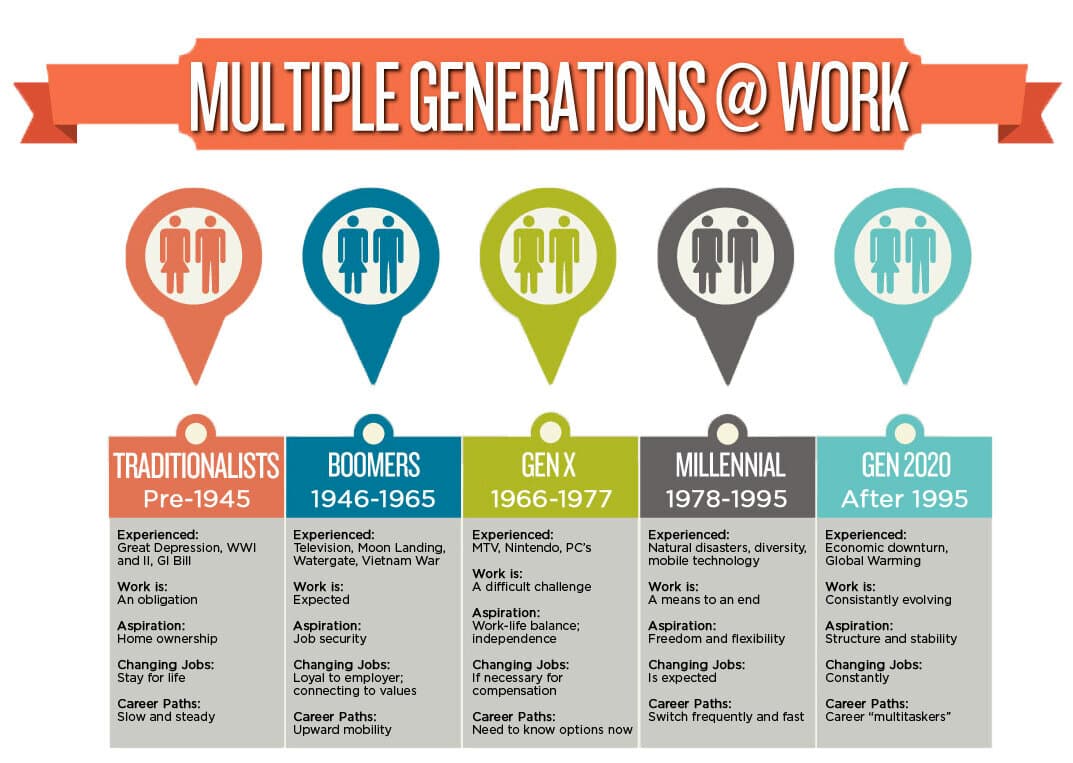Millennials in the Workforce: Identity



It’s no secret that the world of work is more diverse than ever. With an unprecedented five generations in today’s workforce, people and culture professionals face the unique challenge of uniting employees in the midst of this generational diversity. Age and life experience greatly impact employees’ expectations of work, enjoyment of their jobs, ability to offer feedback, and benefit preferences, just to name a few.

As the largest and most influential generation in the workforce population, millennials are poised to make their marks on today’s rapidly changing cultural landscape. However, despite their creative energy, millennials are often misunderstood when it comes to work, particularly in regard to identity. As a generation, millennials have a keen sense of self. When the median-aged baby boomer was born (1955), there were 2.8 billion people in the world. No internet. No globalization. No cell phones. No 24-hour news cycle. No Instagram. No Facebook. No having 2,000 “friends” or 10,000 “followers”.
In the 50s and 60s, geographical communities were largely segregated; most people were surrounded by others who looked, acted, and believed quite similarly to them. The idea of a “personal brand” was far from anyone’s mind. The concept of a “selfie” would not only have been perceived as incredibly vain but also quite cumbersome given the size of cameras in the 1950s.

This is not the world (American) millennials grew up in. Millennials came of age in a world that evolved as much in one year as it did in the previous decade. By 1988 (the median birth year of millennials), the earth had picked up a cool 2 billion extra people, totaling 5.1 billion lives. Life hasn’t been private for millennials since they were in college, high school, or even middle school in some cases. During those years, social networking became commonplace and photos of their daily shenanigans began to be plastered all over the world wide web. All of a sudden, the scope and access of the world expanded exponentially. One’s reputation was no longer based on long-term relationships within a tight-knit community; instead, it coalesced with the opinions of strangers based on cursory “scrolls” of one’s newsfeed.
So, why are millennials seemingly so self-absorbed, vain, and image-conscious?

Well, that’s easy. Remember the movie, The Truman Show? It turns out, Truman’s unique reality of living his life on display for the world to see foreshadowed the future of millions. Millennials are the first generation to live a “Truman Show” existence. In that light, it’s understandable that image-management has become such a thing, isn’t it?
So, where does that leave us? What is the upside of all this “personal branding” and identity-seeking? In a global society, a connected society, an incredibly diverse society with a booming population, individuals pursue more than ever to be just that — individuals. “Self-discovery”, finding out who you really are, is serious business in the lives of millenials. We, the millennials, want to firmly establish who we are and what we are about.
Yes, we are incredibly open, tolerant, and most take a “you do you” approach to life; but this does not negate the yearning to be unique.
And this pursuit to define one’s self translates to identifying with causes, brands, cities, leaders, and, yes, employers.
To be a millennial means to be fiercely individualistic. We are a community-oriented generation that strives to maintain our unique style, voice, and perspective amidst a sea of others. This perspective is matched (if we are living with authenticity) by what we wear, what we eat, where we spend time, and where we work. If a millennial is going to find a home with an employer, that company must be authentic and must seek to understand and appreciate the individual they hire. The minute a millennial feels like a number, like their effort and labor are all that matters, they’ll go and press the “seeking” button on LinkedIn; and when they do make that job change, their 2,000 friends and 10,000 followers are going to hear about it.

.jpeg)
